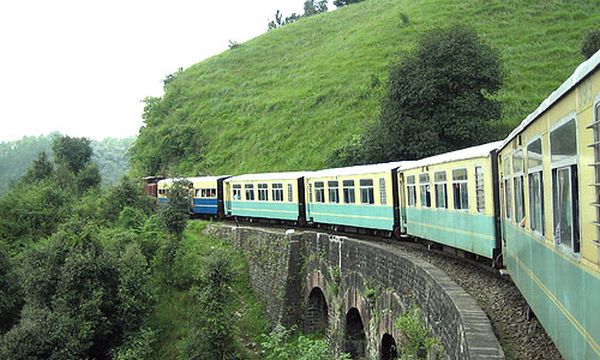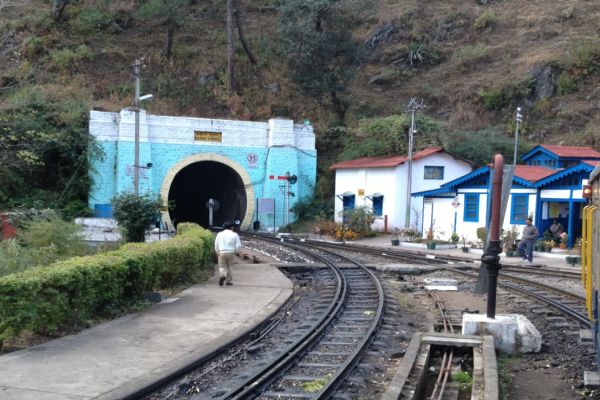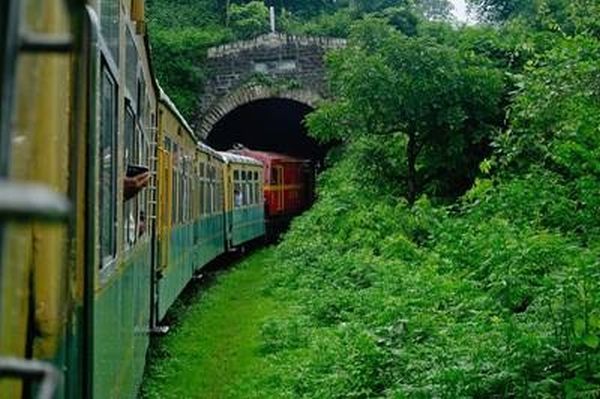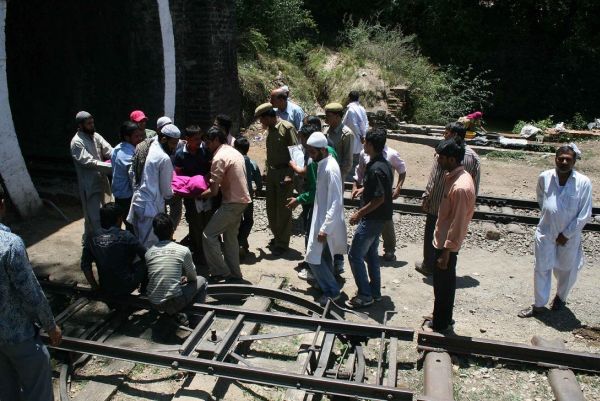The Kalka Shimla railway line is a great achievement of human ingenuity. It provides a completely unique view of the Shivalik hills and the towns it passes by. This piece of heritage needs to be preserved and cared for. There are many stories related to this track including ghosts, suicides and giant snakes. Read on to find out more.
Started in 1903, this 110 year old engineering marvel is today a UNESCO World Heritage Site along with the Darjeeling and Nilgiri Mountain Railways. This 96 km long narrow gauge track was one of the better gifts that the British gave to us Indians.

A total of 107 tunnels were built but in 1930 they were numbered again as some of the tunnels were not in use and the total number came down to 103. Later tunnel 46 at Solan brewery was demolished and today only 102 are active. There are 889 bridges and 919 total turns. The rise in altitude is from 656 meters above sea level at Kalka to 2076 meters at Shimla. All this shows that this line is an amazing achievement of engineering when you consider the fact that it was built 110 years ago.
The train ride from Shimla to Kalka takes 5 to 6 hours at a leisurely pace of 25 km/h. This might seem slow to us today but in 1903 it was a vast improvement, as it took at least a couple of days to travel the same distance back then. The track has been active for all these years and proves that when the British build something they build it to last.
There are different stories related to the tunnels of this track. Two stories are especially famous and seem to have mixed up with each other over the years.
Colonel Barog and Tunnel 33

This story is about a British Colonel and the longest tunnel on this railway line. Colonel Barog was a Railway Engineer and he was assigned with the building of this tunnel. He decided to dig from both sides of the mountain in order to decrease the amount of time spent on building it. But his calculations were wrong and the two sides failed to meet each other in the middle.
The government fined him Rs 1 as a humiliating punishment. Colonel Barog couldn’t take it and committed suicide near the tunnel. Some say he shot his dog before he shot himself near his failed tunnel. Later the tunnel was completed by Chief Engineer H.S. Harrington with the help of local ascetic Bhalku. This tunnel is today’s Barog tunnel even though it is completely different from the failed tunnel of Colonel Barog. The small town of Barog owes its name to the same gentleman.
Bhalku also helped to build several other tunnels on the line and was awarded a medal and turban from the British Viceroy. The Barog tunnel is 1143 meters long and it takes 2.5 minutes for the train to cross through.
The Ghost of Tunnel 103

Tunnel 103 is the last tunnel towards Shimla at the end of the line. It is believed to be haunted by a British gentleman’s ghost who likes chatting up individuals passing by the tunnel. Some people have got the story of Barog mixed up with tunnel 103 and say that it is Colonel Barog’s ghost that haunts the tunnel. But if Barog was to haunt any tunnel it would be his failed tunnel that lies closed today.
Other ghosts, spirits and paranormal activities have also been observed near tunnel 103. Some talk about a woman wearing a black sari and carrying a malnourished baby. You can visit tunnel 103 to see for yourself and even if you are a complete skeptic, the dingy damp tunnel and the cold eerie air inside might just send a tickle down your spine.
Tara Devi Tunnel 91

This tunnel was being built under the residence of a powerful goddess and the workers were scared of working there as they didn’t want to face the goddess’ wrath. Work had to be stopped for a little while when a breathing pipe was mistaken for a large snake sent by the goddess herself. This tunnel is the second longest tunnel on the track at 992 meters.
Today the track continues to be an object of pride for all Himachalies and one of fascination for the tourists. A BBC documentary was made on this track and you can buy the DVD at the bookstall at the Shimla station. But the truth is that the track has been neglected and needs to be preserved if we want it to continue to be used for coming generations. The tunnels and bridges need to be surveyed and strengthened wherever necessary. If we take care of it, there is no reason why it shouldn’t still be in use 100 years from now.
